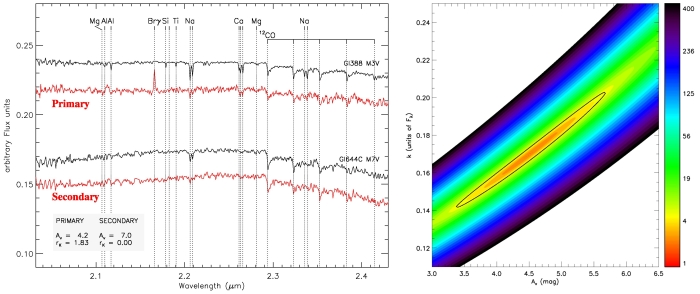| EPoS Contribution |
|
Protoplanetary Disks of Binary Systems in Orion
Sebastian Daemgen ESO Garching, Garching, Germany | |
| It is well known that the process of low-mass star formation leads, almost exclusively, to the formation of binary or higher order multiple sytems. Another inevitable consequence of the star formation process is the formation of a dusty protoplanetary disk surrounding each young star, the birthplace of planets. Theoretical models suggest strong impact of binarity on the evolution of those disks, in particular for close binary systems: significant truncation and faster evolution of the disks are proposed to be consequences of the presence of a stellar companion. In order to observationally trace protoplanetary disks and their properties in young binary systems we obtained adaptive optics supported spectroscopy of individual binary components for several low-mass binaries in the well-known Orion Nebula Cluster. We find new evidence for a paucity of actively accreting secondaries, indicating that in a binary system it is the lower mass component that disperses its disk faster. Interestingly, we do see such peculiarities in binary disk evolution although the target sample consists of wide, >100AU, binaries -- separations for which the disks are expected to evolve similarly to single star disks. | |
 | |
| Caption: Left: The red spectra show NACO Spectra of both components of one of our target binaries. In black are shown the analytically modified template spectra (from the IRTF Spectral Library; Cushing et al. 2005, ApJ, 623; Rayner et al. 2009, ApJS, 185) which were used to fit spectral types, extinction A_v, and veiling r_K through chi2 minimization. Right: The best combination of the parameters is found in the minimum of the chi2 surface spanned by A_v, k=r_K*F_photosphere(2.2mu), and a normalizing constant c. Shown here is a cut of the chi2 surface along the A_v and k axes at best c for the primary component of the target binary. The black contour encircling the best value (chi2_min) is defined as chi2_min+3.5 and identifies the uncertainties in A_v and k. | |
| Collaborators: M. Petr-Gotzens, ESO Garching, Germany S. Correia, Astr. Inst. Potsdam, Germany |
Key publication
Suggested Session: Early Phases of Disks |

